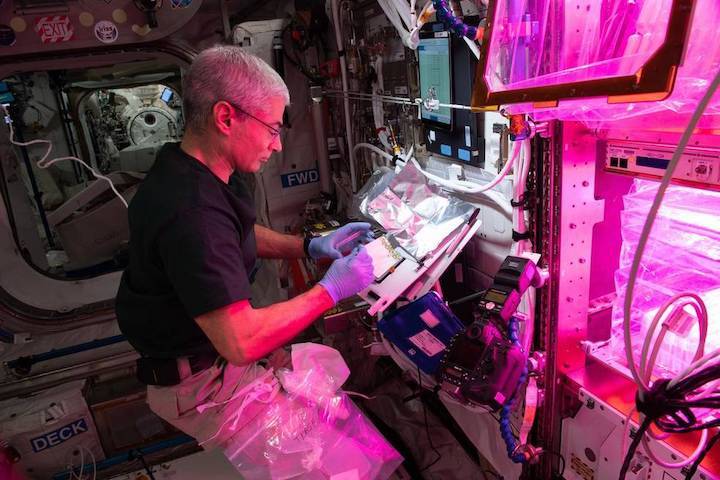19.08.2021
NASA Invites Media to Briefing on Science Launching to Space Station

NASA will host a media teleconference Monday, Aug. 23, at 1 p.m. EDT to discuss science investigations launching on the next SpaceX commercial resupply flight to the International Space Station. Experiments aboard include investigations into protecting bone health with botanical byproducts, monitoring crew eye health, demonstrating improved dexterity of robots, exposing construction materials to the harsh environment of space, mitigating stress in plants, and more.
SpaceX is targeting Saturday, Aug. 28, at 3:37 a.m. EDT for the launch of its Dragon spacecraft on a Falcon 9 rocket from Launch Complex 39A at NASA’s Kennedy Space Center in Florida. This will be SpaceX’s 23rd Commercial Resupply Services mission to the orbiting laboratory.
To participate in the teleconference, media must contact Monica Witt at: monica.j.witt@nasa.gov by 11 a.m. Monday, Aug. 23, for dial-in information.
Participants in the briefing will be:
- Jennifer Scott Williams, manager at the Applications Client Support Office for NASA’s International Space Station Program Research Office. Williams will share an overview of the research headed to the space station and how it can benefit humanity.
- Patrick Masson, professor of genetics at the University of Wisconsin-Madison and principal investigator for APEX-08, and Shih-Heng Su, co-investigator and assistant scientist at the University of Wisconsin-Madison. The APEX-08 experiment will study plants’ genetic responses to stress to identify key targets for genetic engineering of plants more suited to microgravity.
- Fabio Peluso, team leader, and Valeria Lucci, co-investigator, for the READI-FP experiment. This investigation studies how bio-collagen and bioactive metabolites sourced from waste products in wine production could have potential protective effects on bone tissue during spaceflight.
- Juergen Drescher and Scott Ritter, principal investigators for Retinal Diagnostics, which will test the potential to capture images of the human retina in space using a commercially available ophthalmology lens. The lens is approved for routine clinical use with mobile devices.
- Toyotaka Kozuki, chief technology officer of GITAI Inc. and principal investigator of the GITAI Robotic Arm Tech Demo, and Dr. Yuske Taguchi, director of business development of GITAI Inc, They will discuss the technology demonstration of a robotic arm designed to conduct common crew activities directed by teleoperations from Earth.
- Ian Karcher, project engineer for MISSE-15 NASA, an experiment that will expose materials such as concrete, thin-film solar cells, and more to the harsh environment of space to test their performance and durability.
- Jeff Fitch, mission manager for the Faraday Research Facility, a new tool for conducting small experiments in microgravity. During this first mission, the facility will host a study testing remote drug delivery as well as experiments designed by Girl Scouts.
SpaceX’s Dragon spacecraft also will carry crew supplies and hardware to the orbiting laboratory to support the Expedition 65 and 66 crews.
The space station is a convergence of science, technology, and human innovation that demonstrates new technologies and enables research not possible on Earth. It has been occupied continuously since November 2000. During that time, 244 people and a variety of international and commercial spacecraft have visited the orbiting laboratory. The space station serves as the springboard to NASA's human exploration of deep space, including future missions to the Moon and Mars.
Quelle: NASA

